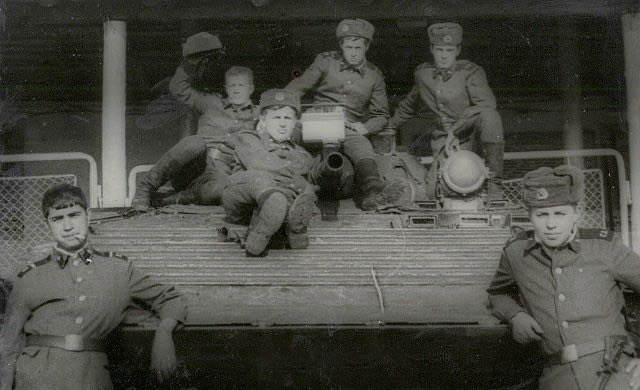The BMP-2 is a widely used and well known infantry fighting vehicle today. For many it feels like it was always there, alongside the BMP-1. There is also a common myth, stating that BMP-2 was developed based on the Afghan experience. It is believed, that the 2A42 auto cannon was installed on the vehicle specifically to fight against mujahedeen ambushes far up in the mountains. Then again, the BMP-2 would never see mass production if the Soviets never invaded Afghanistan. So where is the truth?

Confusing development history
In the middle of 1972, Chelyabinsk factory has presented the armed forces with an updated BMP-1. The base of the vehicle was a little longer than regular BMP-1, it featured one more truck wheel. But the main difference was the armament. Instead of a short 2A28 gun, a new 2A41 long gun was installed. Instead of a PKT machine gun, a 12.7mm caliber Utes was present. The ATGM system was also updated to the newest version.
All in all this was a pretty good update, but the Armed Forces were thinking about a different approach. At the time, US forces used AH-1 "Cobra" helicopters against North Vietnamese armored objects. And they were very successful with what they were doing, so the Soviet command was looking for a counter measure.
The idea was to have IFVs capable of fighting the helicopters. They would, of course, need a main gun with high enough elevation and high rate of fire. The new 2A42 30mm auto-cannon was developed for this task, and some experimental vehicles were put together to accommodate this new weapon.

However, with the death of the defense minister, Andrew Grechko, and with the appointment of his successor, Dmirty Ustinov, the whole concept was changed again. Mr Ustinov did not believe that IFVs would be capable to fight well against incoming helicopters and he placed his bets onto a developing AA "Tunguska".
At the time some of the new IFVs with 30mm cannons were already produced. They were called "Object 675" and were sent to military trials, which it has successfully passed. After the trials they were placed on a conservation, since they were not officially adopted by the armed forces.
Usage of BMP-2 in Afghanistan

BMP-1 was used in Afghanistan from the day one. In fact, two were destroyed and two were damaged during the famous operation "Storm 333". During the assault of the Tajbeg Palace, presidential guard unit managed to score these loses.
At first it was believed that this operation was the one time action and that there will be no need to use heavy weapons again. This turned out to be a wrong opinion and through out the first half of 1980 BMP-1s found themselves engaged in combat more and more often. Given that the elevation of the main gun is just 30 degrees, its usage in the mountains was very limited.

To increase their chances, soldiers started to install AGS-17 grenade machine guns on top of their fighting vehicles. Obviously, this was not the best solution and it didn't help with the main gun.
At this point, someone remembered about the "Object 675" vehicles, stored somewhere in Belarus. These were taken out of the storage and distributed among different units of the 40th Army.

In comparison to BMP-1s, new vehicles turned out to be way more capable in this environment. Army loved them and the Kurgan factory proceeded to mass production in April 1980, four month before the IFV was officially adapted by the Ministry of Defense.


Comments